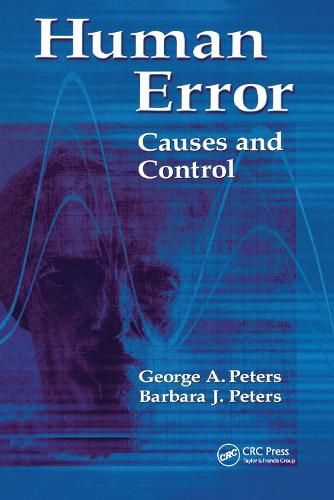Readings Newsletter
Become a Readings Member to make your shopping experience even easier.
Sign in or sign up for free!
You’re not far away from qualifying for FREE standard shipping within Australia
You’ve qualified for FREE standard shipping within Australia
The cart is loading…






Human error is regularly viewed as an inevitable part of everyday life. In many cases the results of human error are harmless and correctable, but in cases where injury and death can occur, reduction of error is imperative. An integration of useful how-to-do-it information, Human Error: Causes and Control covers theories, methods, and specific techniques for controlling human error. It provides ideas, concepts, and examples from which selections can be made to fit the needs of a particular situation. Detailed, practical, and broad in scope, the book explores the field of human error, including its identification, its probable cause, and how it can be reasonably controlled or prevented.
Experts in human factors, design engineering, and law, the authors explore and apply known generic principles effective in the prevention of consumer error, worker fault, managerial mistakes, and organizational blunders. They discuss errors and their effects in our increasingly complex technological society and delineate how to devise a proper framework, select workable concepts and techniques, and then implement them. Exploring widespread applications of the techniques, the book illustrates how to achieve a fully integrated, process-compatible, comprehensive, user-effective, and methodologically sound model.
$9.00 standard shipping within Australia
FREE standard shipping within Australia for orders over $100.00
Express & International shipping calculated at checkout
Human error is regularly viewed as an inevitable part of everyday life. In many cases the results of human error are harmless and correctable, but in cases where injury and death can occur, reduction of error is imperative. An integration of useful how-to-do-it information, Human Error: Causes and Control covers theories, methods, and specific techniques for controlling human error. It provides ideas, concepts, and examples from which selections can be made to fit the needs of a particular situation. Detailed, practical, and broad in scope, the book explores the field of human error, including its identification, its probable cause, and how it can be reasonably controlled or prevented.
Experts in human factors, design engineering, and law, the authors explore and apply known generic principles effective in the prevention of consumer error, worker fault, managerial mistakes, and organizational blunders. They discuss errors and their effects in our increasingly complex technological society and delineate how to devise a proper framework, select workable concepts and techniques, and then implement them. Exploring widespread applications of the techniques, the book illustrates how to achieve a fully integrated, process-compatible, comprehensive, user-effective, and methodologically sound model.